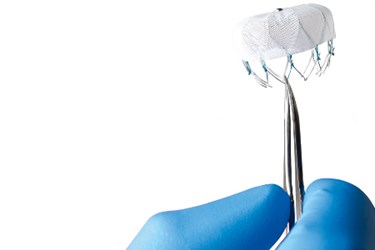Boston Scientific's Watchman Could Receive CED Reimbursement From CMS

Centers for Medicare and Medicaid Services (CMS) released a proposal last week that would limit access to Boston Scientific’s Watchman, a stroke prevention device for patients with atrial fibrillation (AF), on the grounds that there is insufficient clinical data to support its superiority over existing pharmaceutical interventions. Now, CMS has suggested the creation of a registry that would provide coverage for Medicare and Medicaid patients participating in an approved clinical study of similar devices.
A typical treatment course for patients with AF is a long-term regimen of anticoagulation drugs, such as Warfarin — a blood-thinning therapy that requires careful adherence and regular monitoring to avoid bleeding complications. This therapy is not appropriate for all patients, and an estimated 40 percent of eligible patients refuse to take it. Boston Scientific developed the Watchman left atrial appendage closure (LAAC) device as a surgically implanted alternative or complement to anti-coagulation therapy.
Though it has been on the international market since 2009, Watchman only received FDA approval in March. Boston Scientific CEO Michael Mahoney projected Watchman’s release in the U.S. would generate $500 million in incremental growth for the company, but Forbes reported that a few significant obstacles could stand in the way of those numbers.
According to Forbes, the FDA’s advisory committee found that Watchman is not as effective as Warfarin in preventing certain kinds of stroke, and it has not demonstrated superiority to anticoagulants like Johnson & Johnson’s Xarelto or Pfizer’s Eliquis. Forbes also warned that issues with government reimbursement could limit Watchmen’s success in the U.S.
“If this device does not qualify for reimbursement, health care providers will not readily adopt this procedure, as it will significantly reduce the market demand for the product,” said Forbes.
While CMS’ proposal has not been implemented, Boston Scientific has experienced a stock market dip, and several Wall Street analysts weighed in on the fate of Watchman. Evercore ISI’s Vijay Kumar told Street Insider that the CMS decision was more or less expected.
“The good news is that Watchman will be covered” said Mike Matson, an analyst with Needham. “The bad news is that Boston Scientific will need to follow patients in a registry.” Matson added that both transcatheter aortic valve replacements (TAVR) and transcatheter mitral valve repair (TMVR) devices have both experienced significant growth despite similar CMS limitations.
CMS currently covers TAVR and TMVR devices under what is known as coverage with evidence development (CED). Neither Medicare nor Medicaid cover experimental drugs nor devices, but the CED designation creates a paradigm through which a drug or device developer may be reimbursed if their manufacturer is collecting postmarket clinical data, which they can do if patients are enrolled in a special registry.
The groundwork for an LAAC registry was already established by transcatheter valve therapy (TVT), and Trends in Medicine reported the new registry should be up and running by early 2016 — though its development still requires a great deal of input from professional societies as well as regulatory and industry experts.
When the registry is finished, any medical device company with an FDA-approved LAAC device will able to register patients. Boston Scientific could double down in the field, as it recently received CE Mark approval for its next-generation Watchman FLX. Also, J&J’s Biosense recently acquired the developer of the LAAC device Wavecrest, while St. Jude Medical, whose Amplatzer Amulet endocardial LAA closure device also has received CE Mark approval, could decide to bring the device to the U.S. market.
